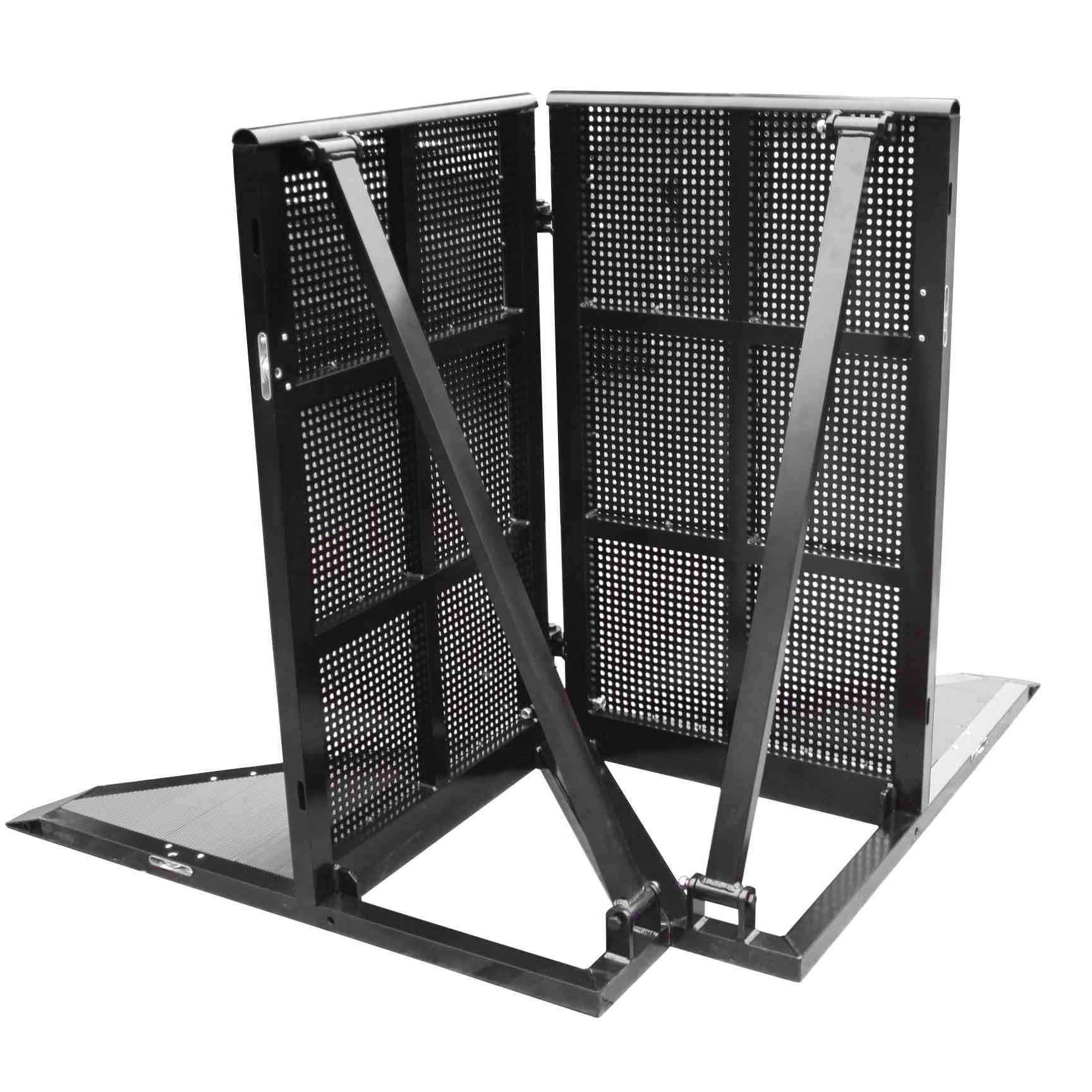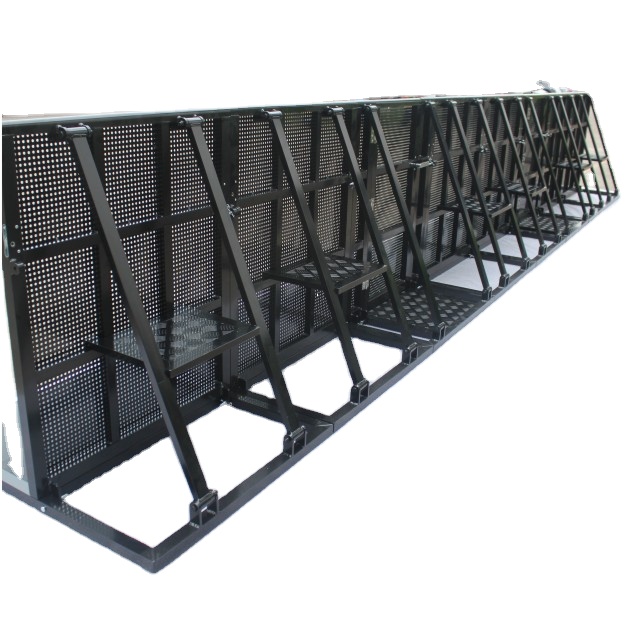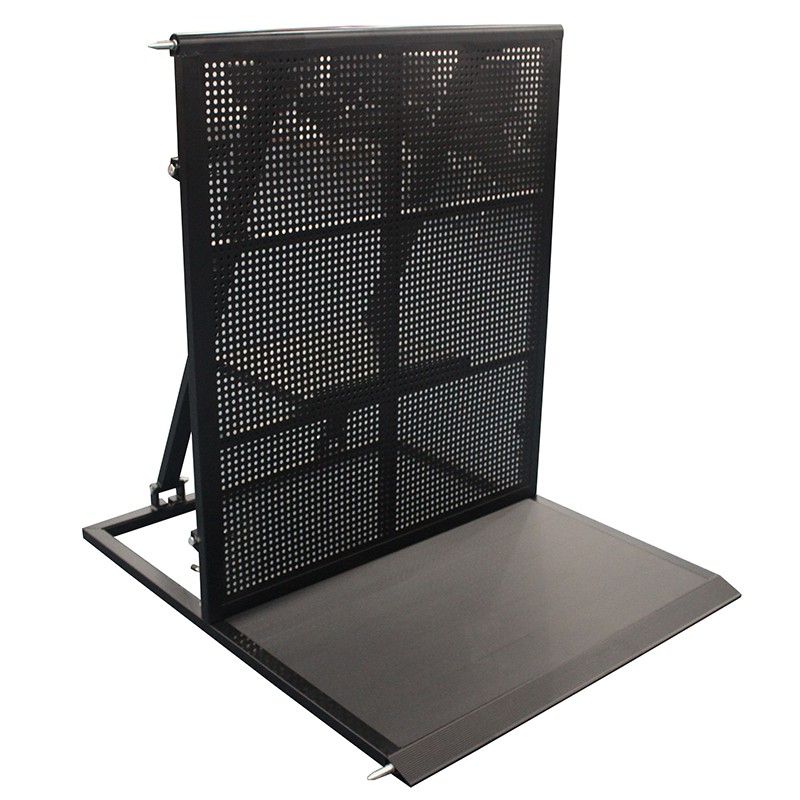What Are You Looking For?
aluminum alloy soccer field protection crowd control safety barriers represent a significant improvement over traditional systems. Their lightweight yet robust construction, coupled with the versatility offered by modular designs, facilitates efficient deployment, rapid reconfiguration, and streamlined maintenance. The incorporation of safety features, such as handrails and accessibility considerations, ensures a safer and more inclusive environment for spectators. The longevity offered by the corrosion resistance of aluminum alloys translates into long-term cost savings. By optimizing both safety and operational efficiency, these barriers play a vital role in creating a more secure and enjoyable experience for all stakeholders involved in the vibrant world of professional soccer. The investment in these advanced crowd control systems represents a commitment to prioritizing spectator well-being and enhancing the overall quality of the sporting event.
The dynamic nature of spectator sports, particularly high-profile soccer matches, necessitates robust crowd control measures to ensure spectator safety and maintain the integrity of the playing field. Traditional barriers often fall short in meeting the demands of modern sporting events, lacking in durability, portability, and aesthetic appeal. Aluminum alloy soccer field protection crowd control safety barriers offer a significant advancement in this area, combining strength, lightweight portability, and a sleek design to create a safer and more efficient spectator management system. This essay will explore the advantages of these barriers, addressing their material properties, design considerations, installation and maintenance, and overall contribution to enhancing spectator safety and operational efficiency within soccer stadium environments.

The primary advantage of utilizing aluminum alloy in the construction of crowd control barriers lies in its inherent material properties. Aluminum alloys possess a high strength-to-weight ratio, meaning they can withstand significant impact forces while remaining relatively lightweight and easy to handle. This is crucial in a dynamic environment like a soccer stadium, where barriers may need to be rapidly deployed and repositioned depending on crowd flow and security needs. Unlike heavier steel alternatives, aluminum alloys minimize the physical strain on personnel responsible for installation and removal, contributing to increased efficiency and reduced risk of injury during setup and takedown. Furthermore, aluminum's inherent corrosion resistance minimizes maintenance requirements, extending the lifespan of the barrier system and reducing long-term costs. Anodizing or powder coating the aluminum further enhances its durability and aesthetic appeal, providing protection against scratching, weathering, and UV degradation. This ensures the barriers maintain their structural integrity and visual appeal throughout their operational life, even in harsh outdoor environments.
The design of an effective aluminum alloy safety barrier is equally critical. Modular design is often preferred, allowing for flexible configurations to accommodate various stadium layouts and crowd densities. Interlocking sections enable rapid assembly and disassembly, adapting to changing needs without the complexities of a fixed, permanent structure. Careful consideration of the barrier's height is necessary; it should be sufficiently tall to prevent spectators from climbing over while remaining manageable for easy handling. The incorporation of strategically placed handrails or grips improves stability and aids in crowd management, providing a secure hold for spectators leaning against the barrier. The design should also account for accessibility requirements, incorporating features to accommodate individuals with disabilities. For instance, designated low-level sections could be integrated to facilitate wheelchair access and clear sightlines. Furthermore, the aesthetic considerations should not be overlooked. A well-designed barrier, potentially incorporating the team’s colours or logos, can integrate seamlessly into the overall stadium aesthetic, enhancing the spectator experience rather than detracting from it.
Installation and maintenance of aluminum alloy barriers are relatively straightforward processes. Their lightweight nature simplifies transportation and deployment, significantly reducing the time and labor required compared to heavier alternatives. Modular designs minimize the need for specialized tools or extensive technical expertise, making them suitable for deployment by stadium personnel with minimal training. Regular maintenance is primarily focused on inspections for damage and corrosion. The inherent corrosion resistance of the aluminum alloy minimizes the frequency of these inspections, while the modular design allows for easy replacement of damaged sections without requiring complete barrier reconstruction. Proper cleaning procedures should also be established to maintain the barrier's aesthetic appeal and ensure visibility of any signage or warning labels.

